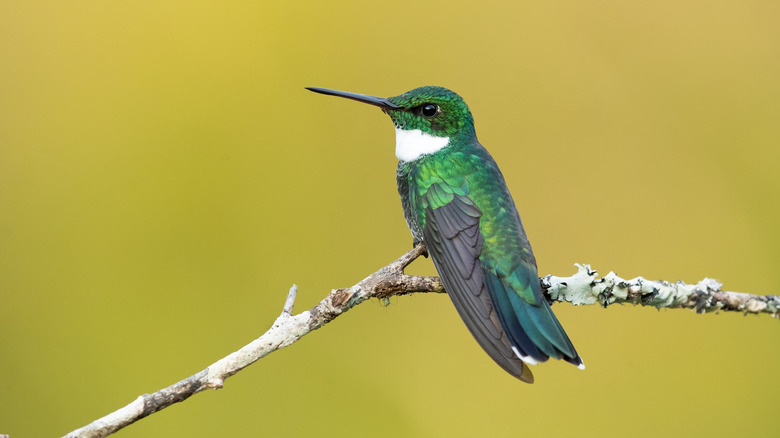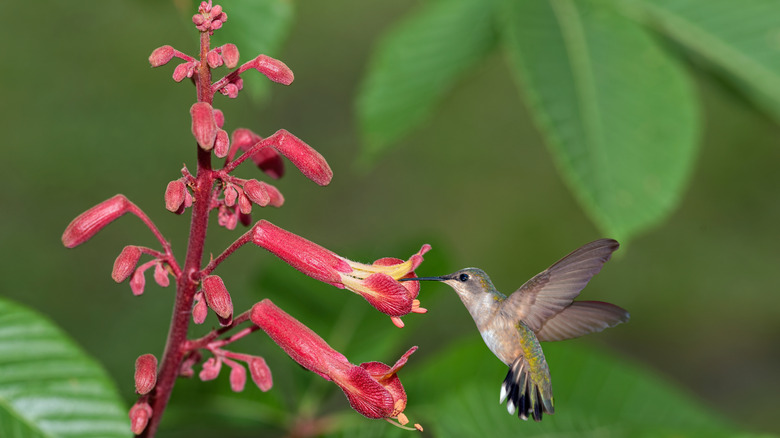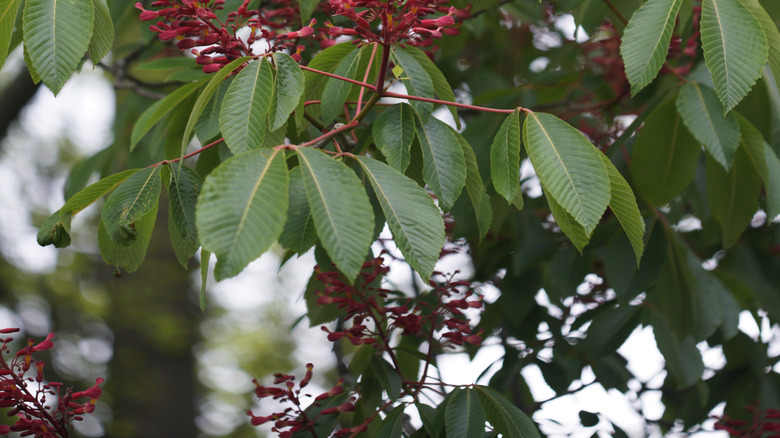The Beautiful Tree With Long-Lasting Blooms That'll Make Your Yard A Hummingbird Haven
Whether hummingbirds are seasonal guests in your garden or stick around all year long, these avian beauties are always a welcome sight as they flit from bloom to bloom. Not only are they a joy to watch, but some of the benefits of attracting hummingbirds to your yard include them acting as natural pest control, and serving as hardworking pollinators. One of the most effective and visually striking ways to invite more hummingbirds in is by planting native species like the Aesculus pavia, or the red buckeye tree, which is a garden gem that combines lasting blooms with serious pollinator appeal.
The red buckeye is a flowering tree that can bring some much-needed color to your yard. Typically growing between 15 and 20 feet tall, this deciduous tree or shrub is well-suited for medium to large yards, and yards in need of a pop of color or a focal point for pollinators. It thrives in USDA Hardiness Zones 4 through 8 and begins blooming in April. Its bold red flowers often appear right on cue for the arrival of migrating hummingbirds, making it one of the best flowers for attracting ruby throated hummingbirds during spring migration.
Why hummingbirds love red buckeye trees
It's the red buckeye tree flowers — which are tubular in shape, appear in upright clusters, and can grow up to 8 inches long – that make the red buckeye so irresistible to hummingbirds. The tubular shape is perfect for a hummingbird's long, thin beak to fit inside so it can feed on the nectar from the flowers. As the flowers can last for over a month, this offers a consistent food source for hummingbirds, which is why it's no surprise that a red buckeye in your yard will attract a slew of hummingbirds year after year.
If hummingbirds frequent your area, simply planting a red buckeye tree should attract them to your garden as they will seek out the nectar from its flowers. To make your yard even more appealing, consider planting other hummingbird-friendly trees nearby, such as the Ohio buckeye (Aesculus glabra) or the tulip poplar (Liriodendron tulipifera), both of which are known to attract hummingbirds with their abundant spring and early summer flowers.
How to grow red buckeye trees
Planting a red buckeye (or two!) is an easy, low-maintenance way to add vibrant color and welcome a little more life into your landscape. These trees love to be situated in a spot with moist, well-draining soil, and a balance of sun and shade, depending on your area. Full sun is better tolerated in cooler climates, while a red buckeye will appreciate some afternoon shade in warmer regions. These trees aren't particularly fussy about soil and can adapt well to a variety of types including clay, loam, or even sandy conditions.
If you're starting from seed, don't be surprised if it takes up to three years for a red buckeye to produce its first blooms. For a quicker payoff, you may want to purchase a young plant from a nursery, which will get established and flower much sooner. While it can be planted at almost any time of year, consistent watering is key, especially during its early growth. Red buckeyes aren't especially drought-tolerant, so they'll need a little extra attention during extended hot or dry periods to keep them healthy and thriving.
While the red buckeye offers a stunning show of blooms and provides a reliable nectar source for pollinators, it's important to note that the entire tree is toxic to humans and pets if ingested. Which is why it's best to admire it for its beauty and pollinator power, but leave it to the hummingbirds to enjoy.


